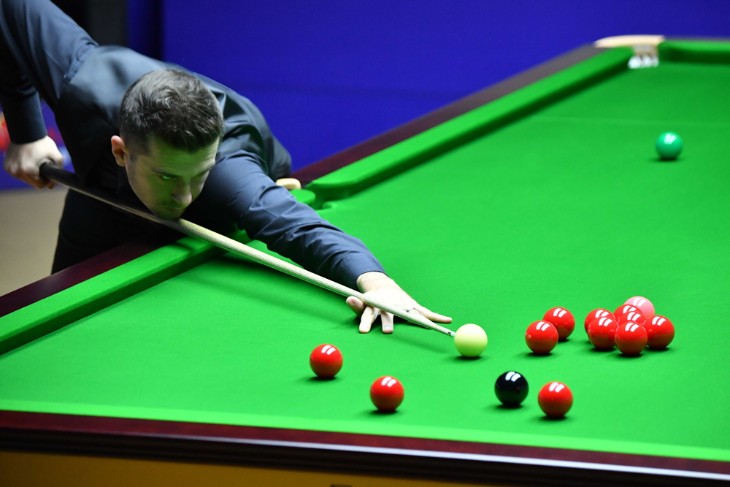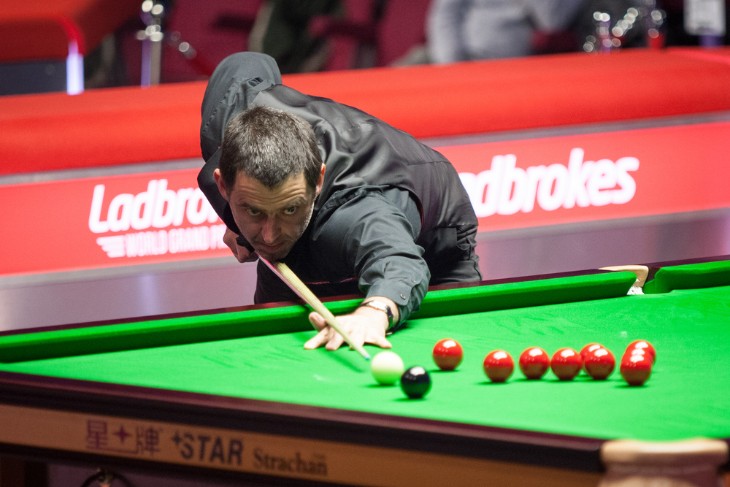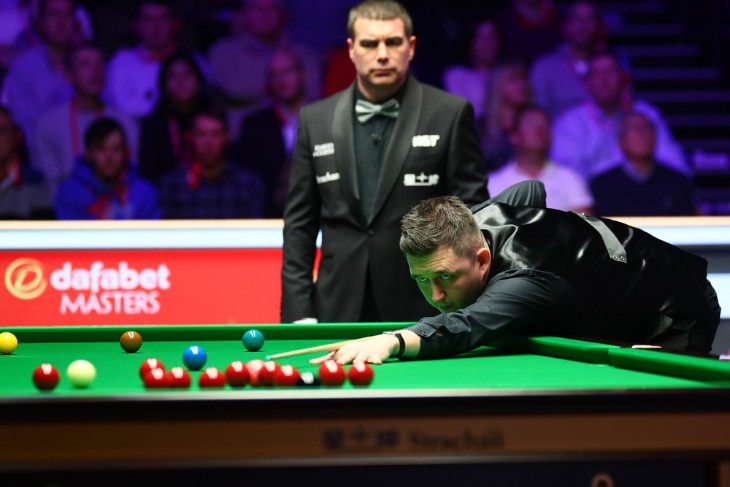Snooker, a game of precision and finesse, often takes place indoors, seemingly sheltered from the whims of weather and climate. However, external weather conditions can subtly influence the indoor playing environment, affecting both the equipment and the players. This article delves into the intricate ways in which climate and weather can impact snooker play.
The Effect of Humidity and Temperature on Snooker Tables
Humidity and temperature play a big role in how a snooker table behaves during a game. These factors can change the way the table and the balls interact, affecting the overall play.
When the humidity is high, the cloth on a snooker table can absorb moisture from the air. This makes the cloth heavier and slower. The balls then roll more slowly and with less predictability. This change can be challenging for players who are used to a faster surface. They have to hit the balls harder and adjust their aim to account for the slower roll.
On the other hand, low humidity can make the table faster. The cloth is drier and the balls roll more quickly and smoothly. Players have to adapt to this change as well. They need to use less force in their shots and be more careful with their aim.
Temperature also affects snooker tables. In a warm environment, the wood of the table can expand slightly. This can change the level of the table and the way the balls move on it. Even small changes in the table level can affect the roll of the balls. Players may find that shots they are used to making behave differently.
Cold temperatures can have the opposite effect. The wood can contract, which might make the table a bit uneven or change the tension of the cloth. Again, this affects how the balls move and requires players to adjust their game.
The Role of Air Quality and Ventilation in Playing Conditions
Air quality and ventilation are crucial in creating the right conditions for snooker. Good air quality ensures that players can focus and maintain their concentration throughout a game. Ventilation plays a big part in maintaining this quality of air.
When the air in a snooker hall is stale or poor, it can affect players' endurance and concentration. They might find it harder to focus for long periods, which is essential in snooker. Stale air can make the environment feel heavy and uncomfortable, which is not ideal for a sport that requires high levels of concentration and precision.
Good ventilation helps keep the air fresh and clean. It removes any smoke, dust, or other particles that might be floating around. This is important because these particles can affect players' visibility. They can also settle on the table and balls, potentially impacting the roll and accuracy of shots.
Properly ventilated spaces also help regulate temperature and humidity. This is important because, as we've seen, these factors can greatly affect the condition of the snooker table and the behaviour of the balls. A well-ventilated room helps keep these conditions stable, ensuring the table plays the same way throughout a game.

Weather-Induced Psychological Effects on Players
Weather can have a surprising impact on the psychological state of snooker players. Although snooker is an indoor game, external weather conditions can influence a player’s mood and performance. Understanding these effects is important for players to maintain their best game, regardless of the weather.
On gloomy, overcast days, players might feel less energetic or motivated. The lack of sunlight can affect mood, making players feel more tired or less enthusiastic. This can be a challenge in snooker, where mental sharpness and focus are crucial. Players need to find ways to motivate themselves and stay alert, even when the weather is dreary.
Conversely, bright and sunny weather often uplifts spirits. Players may feel more energetic and positive on sunny days. This boost in mood can translate into better focus and performance at the table. The challenge here is to not get overly relaxed or overconfident, which could lead to careless mistakes.
Some players might be affected by seasonal changes, like those in winter or summer. They might find it harder to adjust to extreme temperatures or the shorter days in winter. Being aware of these seasonal effects can help players prepare and adapt. They might change their routine or practice schedule to better suit the season.
Managing Temperature and Humidity: Techniques and Equipment
Managing temperature and humidity is crucial in ensuring optimal conditions for snooker play. Various techniques and equipment are used to keep these factors under control, especially in professional settings.
One common method is using climate control systems. These systems help maintain a stable temperature and humidity level in the snooker hall. By regulating the air, they prevent the tablecloth from becoming too slow or fast due to moisture or dryness. This stability is essential for consistent ball behaviour and fair play.
Dehumidifiers are also widely used, especially in areas with high humidity. These devices reduce moisture in the air, preventing the tablecloth from absorbing too much water. This keeps the table fast and consistent, allowing players to execute shots with precision.
In colder climates, heating systems are important. They keep the playing area warm, preventing the wood of the snooker table from contracting and becoming uneven. Even heat distribution ensures that the table remains flat and the balls roll smoothly.
Advanced snooker halls sometimes use hygrometers, devices that measure the humidity in the air. By monitoring humidity levels, staff can adjust dehumidifiers or climate control systems as needed. This proactive approach ensures that the playing conditions remain ideal throughout the day.
Adaptation Strategies for Players in Varying Climates
Snooker players often need to adapt to varying climates when playing in different locations. Whether it's a humid tropical venue or a chilly indoor arena, understanding how to adjust is essential for top-level performance.
In humid climates, where the air is heavy with moisture, the tablecloth can become slow and less responsive. Players may need to hit the balls harder to achieve the desired effect. To counter this, some players adjust their cueing technique and apply more spin to control the cue ball's path.
Conversely, in dry conditions, the tablecloth can become faster and more unpredictable. Balls may roll further than expected. Players adapt by using softer strokes and focusing on precision to avoid over-hitting shots.
Cold weather can affect the wooden components of the table, causing them to contract and potentially lead to an uneven playing surface. To combat this, heating systems are used to maintain a stable temperature. Players must also adapt by ensuring their cue action is consistent despite the temperature difference.
In extremely hot conditions, players may experience discomfort and fatigue. Staying hydrated and taking short breaks between frames becomes crucial. Players also need to maintain their mental focus and avoid letting the heat affect their decision-making.
Adaptation strategies extend beyond the climate itself. Different venues may have varying lighting conditions, tablecloth brands, and table sizes. Experienced players practice in diverse settings to become adaptable and perform consistently in any environment.
The Evolution of Snooker Equipment in Response to Climate Challenges
As snooker evolved into an international sport, players encountered a wide range of climate challenges in various regions. In response to these challenges, snooker equipment has also undergone significant evolution to ensure fair and consistent gameplay.
One crucial aspect of equipment adaptation is the development of tablecloths. Manufacturers now produce tablecloths with varying thickness and materials to suit different climates. Thicker cloth may be used in humid regions to slow down the ball speed, while thinner cloth is preferred in dry climates to maintain a faster pace.
Table heating systems have become standard in many professional snooker venues. These systems ensure that the table's wooden components remain stable, preventing warping or unevenness caused by temperature fluctuations. Heating elements are strategically placed beneath the table to maintain an ideal playing surface temperature.
Cue design has also evolved to address climate-related challenges. Players often opt for cues with materials that are less susceptible to temperature changes. For instance, cues made from composite materials or carbon fibre are less affected by humidity and temperature variations, providing a consistent feel regardless of the playing environment.
In response to varying lighting conditions, venue operators have invested in advanced lighting systems that offer consistent illumination across the table. This minimises shadows and glare, ensuring that players can see the table and balls clearly, regardless of the climate outside.
Furthermore, the evolution of snooker equipment has been driven by the need for portability. Professional snooker tournaments are held in different locations worldwide, each with its own climate. Portable and climate-controlled snooker tables have become essential for maintaining consistent playing conditions regardless of where the tournament is hosted.
The Global Snooker Scene: Tackling Climate Variations
Snooker, once a predominantly British sport, has now spread its roots worldwide. With this expansion, players have faced diverse climate conditions, from the dampness of London to the dry heat of Dubai. Adapting to these variations has become crucial for both professional and amateur players.
In humid regions like Southeast Asia, where moisture levels can affect table conditions, players and tournament organisers have implemented climate control measures. Dehumidifiers are commonly used to maintain optimal playing conditions by preventing the tablecloth from becoming overly damp. This ensures that the cloth remains consistent, allowing for precise ball control.
Conversely, in arid climates, like those found in the Middle East, snooker tables are equipped with humidifiers to counteract excessive dryness. This prevents the cloth from drying out and becoming too fast, which could lead to unpredictable ball movements.
Temperature control is equally vital. In colder regions, table heaters are employed to keep the wooden components at a consistent temperature. This prevents the table from contracting or warping due to cold conditions, guaranteeing a level playing surface.
Conversely, in hot climates, air conditioning units are used to maintain a comfortable temperature within the playing area. This ensures that players can focus on their game without being affected by sweltering heat.
The global snooker community has also recognized the need for standardised equipment that can withstand different climates. Snooker tables are now manufactured with materials that are less prone to expansion or contraction due to temperature and humidity changes.

Preparing for Climate Challenges: Training and Mindset
The world of snooker has not been immune to the effects of climate variations. As temperature and humidity levels fluctuate, players and organisers have had to adapt to these challenges. In response, snooker equipment and technology have evolved to ensure a consistent playing experience.
Climate-controlled venues have emerged as a solution to combat the impact of external weather conditions. These venues are equipped with sophisticated heating, ventilation, and air conditioning (HVAC) systems. They can regulate temperature and humidity levels, creating an ideal playing environment regardless of the weather outside.
Snooker tables themselves have undergone changes to address climate-related issues. Heating systems installed beneath the playing surface help maintain a consistent table temperature. This innovation prevents problems like tablecloth condensation or warping due to extreme temperatures.
Lighting conditions are crucial in snooker, and advancements in lighting technology have played a significant role in mitigating climate challenges. Adjustable LED lighting systems can replicate natural daylight, ensuring consistent visibility and reducing the impact of external lighting conditions.
Humidity control has also become a focal point. Snooker tables are now equipped with humidity control systems. These systems help maintain the optimal level of moisture in the air, which, in turn, keeps the tablecloth in prime condition.
Equipment standards set by governing bodies, such as the World Professional Billiards and Snooker Association (WPBSA), have been regularly updated to ensure fairness in all playing conditions. These standards encompass various aspects, including table dimensions and pocket openings, to ensure that equipment remains consistent regardless of the climate.
Player education is another essential aspect. Players are now well-informed about how climate can impact equipment and gameplay. They receive guidance on adapting their playing style and strategies to suit varying conditions, whether they are playing in a humid subtropical climate or a desert environment.
Furthermore, research and development in snooker equipment have led to the creation of materials that can withstand different climates. Manufacturers have explored new materials for tablecloths, cushions, and balls, aiming to minimise the effects of temperature and humidity changes.
The Future of Snooker: Innovations Addressing Weather Impacts
The future of snooker is an exciting one, with innovations on the horizon to address the impacts of weather on the game. As climate patterns continue to shift and extreme weather events become more common, snooker organisations are taking proactive steps to ensure the sport's sustainability and fairness.
One key area of innovation is in the development of advanced climate-controlled snooker venues. These state-of-the-art facilities are equipped with cutting-edge technology to regulate temperature, humidity, and air quality. By creating a controlled environment, players can focus solely on their skills and tactics without being affected by external weather conditions.
Additionally, snooker equipment manufacturers are constantly researching and designing cues, balls, and table materials that are more resistant to temperature and humidity fluctuations. This ensures that the integrity of the game is maintained regardless of the weather outside.
Furthermore, the use of weather forecasting and monitoring systems has become more prevalent in snooker tournaments. Organisers can anticipate changes in weather conditions and make adjustments accordingly, such as altering playing schedules or adjusting table conditions.
In terms of player preparation, training programs now include modules on adapting to different climate conditions. Players are coached on how to stay mentally and physically prepared, regardless of whether they are competing in a hot and humid environment or a cold and dry one.
As technology continues to advance, we can expect even more innovations in the world of snooker. These innovations will not only enhance the playing experience but also ensure that the game remains fair and competitive, regardless of the weather challenges it may face. The future of snooker is bright, and with these innovations, the sport is poised to thrive in any climate.
In Summary
The game of snooker has not only been shaped by the skill of its players but also by the elements of climate and weather. From humidity control to climate-controlled venues, the sport has adapted to ensure fair and consistent conditions for players worldwide. It's a testament to the dedication of snooker organisations, players, and equipment manufacturers that the game can thrive in various climates.
As snooker continues to evolve, the ability to master the elements adds an extra layer of challenge and excitement to this beloved sport. Players who can adapt to the ever-changing conditions will find themselves at an advantage, demonstrating their true mastery of the game. So, whether it's a hot summer day or a chilly winter night, snooker remains a game where skill, strategy, and the ability to conquer the elements come together for thrilling competition.
For more information:




.webp)


 (1).webp)




















